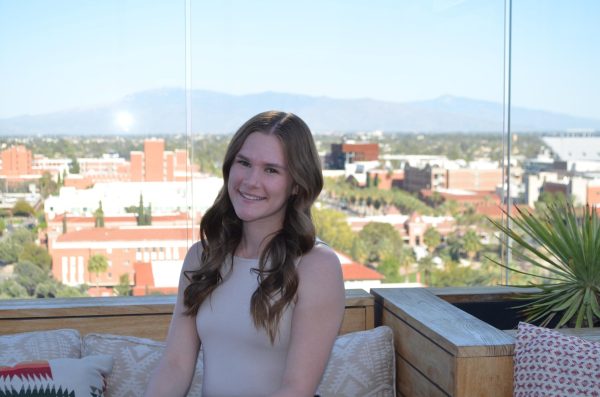A year after University of Arizona officials uncovered a financial discrepancy that led to significant budget cuts, the university has been able to cut its deficit in half.
In November 2023, the University of Arizona’s former chief financial officer announced that a miscalculation in the amount of cash on hand left the university short by $240 million, resulting in a $177 million budget deficit.
John Arnold, the university’s new chief financial officer and senior vice president for business affairs, created the Unrestricted Funds Operating Budget FY 2025 that has helped the university identify the cause of the crisis and figure out future solutions.
According to Arnold’s budget, areas that led to the crisis included athletics, university operations, investments in strategic plans, one-time additional payroll and deferred payroll.
Almost a year later, the university has been able to shave the deficit from $177 million to approximately $63 million. The university is aiming to eliminate the deficit completely in the 2025 fiscal year.
“They want to try and clear it going into fiscal year 2026,” college of social and behavioral sciences Dean Lori Poloni-Staudinger said.
The university’s financial plan, implemented in December 2023, has been a crucial component in improving the overall financial status of the university.
“The goal of the Financial Action Plan has been to do everything possible to minimize the impact to students and academics, including faculty,” UA spokesman Mitch Zak said.
The university in December 2023 proposed other solutions, including a hiring freeze that was limited to employees funded with unrestricted dollars. Positions excluded from the freeze included those fully funded by grants or funds designated as specific-use.
While the faculty has seen a small reduction this fall, numbers are up from past years.
The 2023-2024 Faculty Affairs Annual Report shows the total number of faculty was 5,212 compared with 3,686 reported in the 2020-2021 report.
When it came time for budget cuts, each academic department approached their new budget differently.
“The heads of each of the departments were provided with the ability to adjust their budgets however they wanted to,” Zak said. “They got to make the decisions on how best to reduce their spending if necessary while protecting academics.”
A year after the crisis, SBS’s Poloni-Staudinger has found that her college, which is one of the biggest on campus, is doing well.
“We are doing quarterly reporting,” she said. “The budget office runs data for us that looks at our expenses relative to budget and how we are tracking across different buckets of budget.” Poloni-Staudinger said.
Before the university’s financial crisis, the college had been in activity informed budgeting, which assigns values to certain activities and pays colleges based on these activities.
This includes a certain dollar value per student credit hour and a certain dollar value per majors and graduates.
The university allocates money to colleges based on their number of students and the credits they are taking, majors and graduates.
With a budget that is 96% personnel, there wasn’t a lot of wiggle room for SBS.
What it was costing to run the college was a much higher amount than what the college was bringing in with activity informed budgeting. This led to SBS to dip into savings.
“Eventually those reserves are going to run out,” Poloni-Staudinger said. “We knew there was a problem that we were going to have to solve.”
The university’s new budget model has corrected a lot.
“It’s asked the question. ‘What does it realistically take to deliver on the promise of your college?’,” Poloni-Staudinger said. “I am feeling much better about our fiscal situation today than a year ago.”
She said that most deans have been doing very well with their budgets and have been working hard to stay within their spending plans.
Zak said almost all of the colleges are right now under budget.
Going into fiscal year 2026, Poloni-Staudinger expects a 3-5% cut, but these cuts won’t be across the board. Each college will go into an all funds meeting where colleges will gain a better insight into their performance from the previous year and evaluate their plans going forward.
Arizona Sonoran News is a news service of the University of Arizona School of Journalism.
















